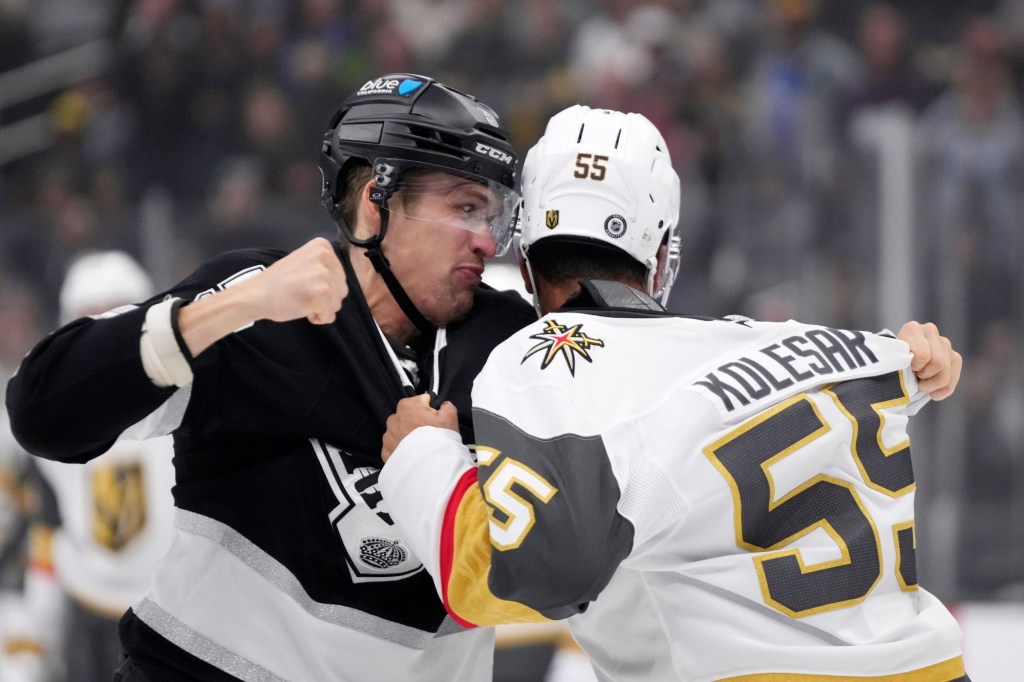
The Kings lost defenseman Andreas Englund to a waiver claim by the Nashville Predators, ending the rugged rearguard’s tenure in Los Angeles after a season and a half.
Englund, 29, saw his position within the organization diminish almost as rapidly as it had risen. He played all 87 games between the playoffs and regular season last year after establishing himself as a fearless fighter, a fan favorite and what former coach Todd McLellan called “the shepherd of the group.”
However, the Kings added a pricier left defenseman, Joel Edmundson, in free agency, and acquired another tough customer, winger Tanner Jeannot, via trade. As training camp opened, current coach Jim Hiller was non-committal regarding Englund’s role.
“He’s being evaluated, just like (Edmundson) is being evaluated … it’s a bit of a puzzle,” Hiller said. “(Englund) earned a lot of respect and equity with the coaching staff, and not just ours, you talk to different people across the league, he established himself pretty well.”
Since then, the 2014 second-round pick of the Ottawa Senators has played just 11 of a possible 53 games this season, despite remaining both healthy and on the Kings’ 23-man roster. He scored his second career goal and had a fighting major to add to the team-leading 11 he racked up last season, but couldn’t hold his position as a regular.
That was despite the fact that the Kings have often dressed seven defensemen. They have featured eight on their main roster throughout the season and, since No. 1 blue-liner Drew Doughty returned in late January, they’ve carried a cumbersome nine D-men.
Englund’s departure resolves that logjam and while he didn’t net the Kings any sort of asset in return, the move gives them a tiny bit more wiggle room under the salary cap as the March 7 trade deadline approaches.
The Kings have been tight against the cap in the past two years, rendering any additions impossible last season and requiring creativity this year –– they will likely need their trade partner retain 50% of an incoming player’s salary and a third team retain an additional 25% in exchange for draft picks or prospects –– in order to make a significant acquisition.



